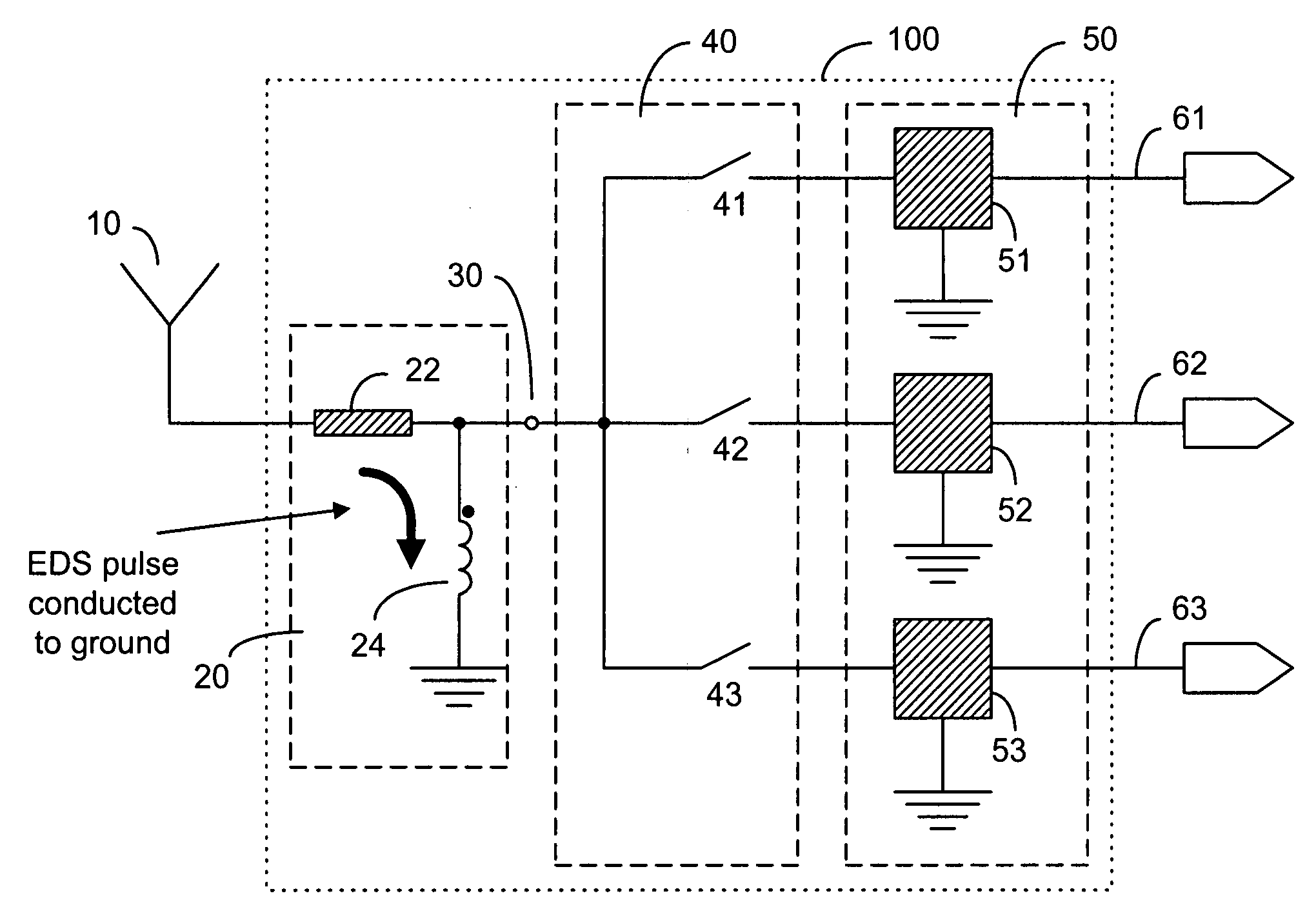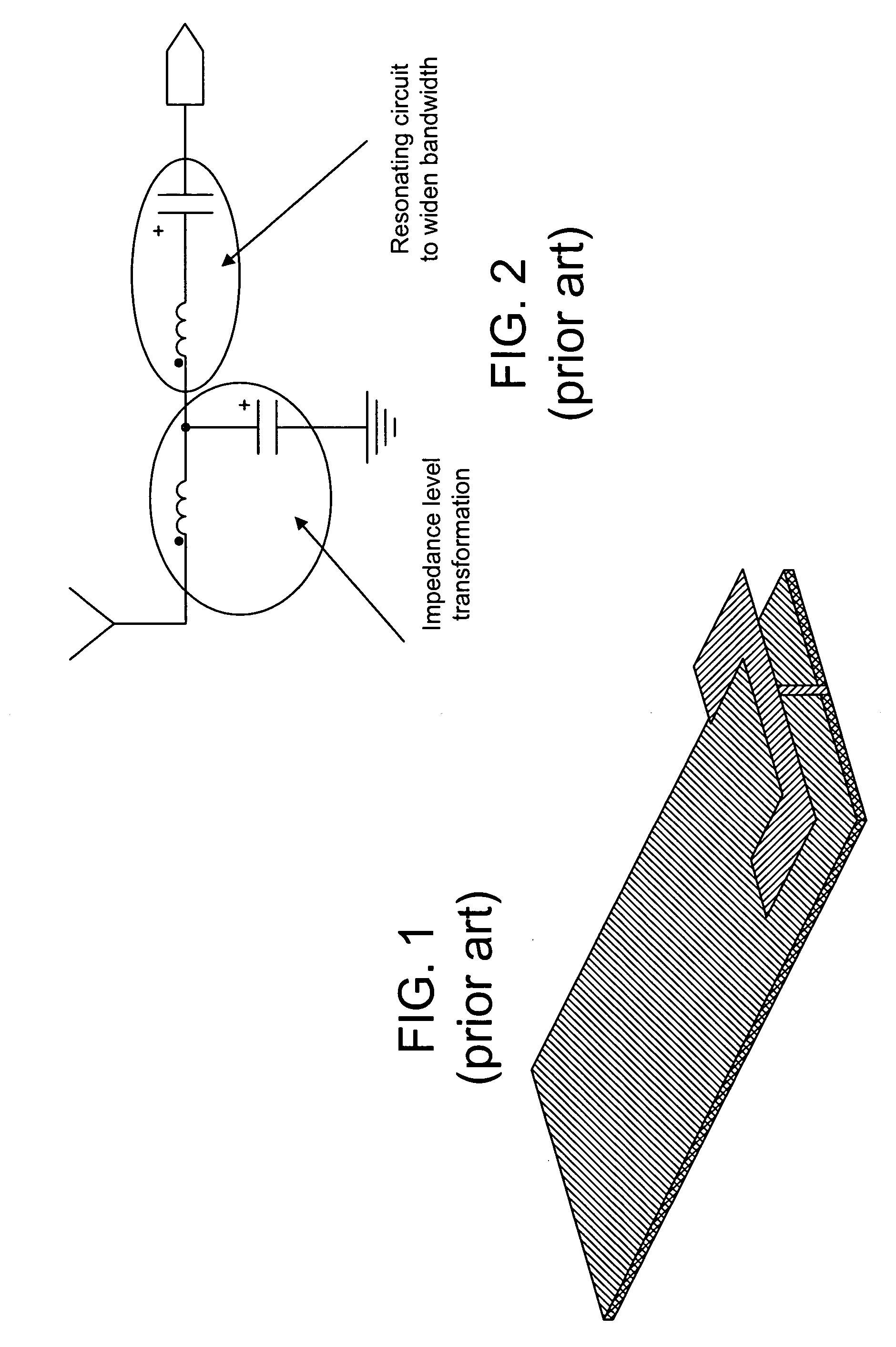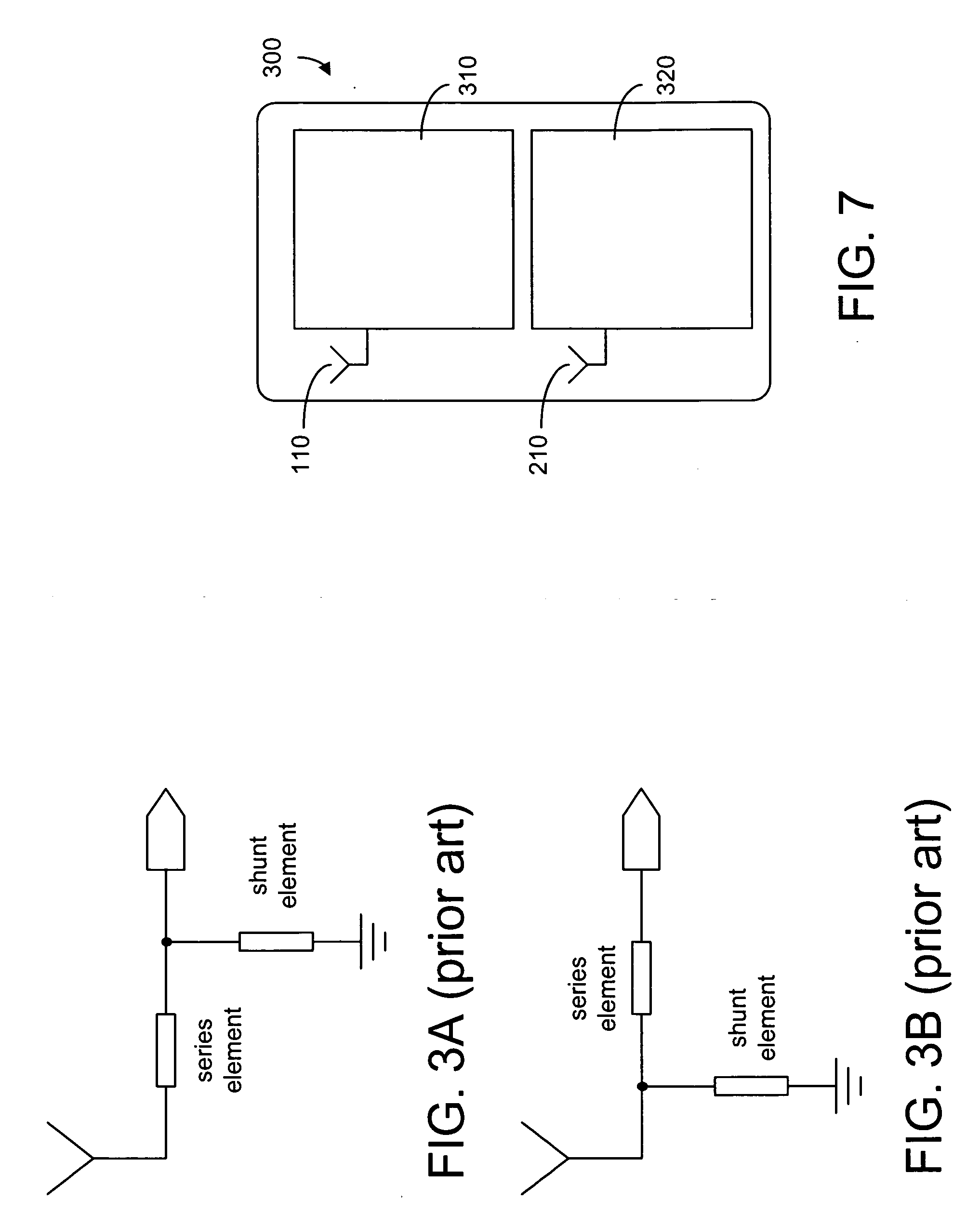RF front-end architecture for a separate non-50 ohm antenna system
a technology of rf front-end and antenna system, which is applied in the direction of antennas, antenna details, electrical equipment, etc., can solve the problems of reducing the performance of antennas, difficulty in designing signal antennas for both 1 ghz band and 2 ghz bands, and inability to match for each band in such splitting
- Summary
- Abstract
- Description
- Claims
- Application Information
AI Technical Summary
Problems solved by technology
Method used
Image
Examples
Embodiment Construction
[0018] A general RF front-end architecture, according to the present invention, is shown in FIG. 4a. As shown, the RF front-end module 100 is connected to a non-50 ohm antenna 10. It is possible that the antenna 10 is also non-resonating. The RF front-end 100 comprises a switching module 40 and a matching module 50 to split the feed point to the antenna into a plurality of signal paths 61, 62, 63. As shown in FIG. 4a, the switching module 40 has a plurality of switching elements 41, 42, 43 for selecting the signal paths 61, 62, 63. Some of the signal paths 61, 62, 63 can be transmission paths and the others are reception paths. The matching module 50 has a plurality of matching networks 51, 52, 53 for separately and independently matching the antenna for the corresponding signal paths. Each of the matching networks can be as simple as those shown in FIGS. 3a and 3b. However, it is also desirable to include a resonating circuit to widen the bandwidth associated with each signal path....
PUM
 Login to View More
Login to View More Abstract
Description
Claims
Application Information
 Login to View More
Login to View More - R&D
- Intellectual Property
- Life Sciences
- Materials
- Tech Scout
- Unparalleled Data Quality
- Higher Quality Content
- 60% Fewer Hallucinations
Browse by: Latest US Patents, China's latest patents, Technical Efficacy Thesaurus, Application Domain, Technology Topic, Popular Technical Reports.
© 2025 PatSnap. All rights reserved.Legal|Privacy policy|Modern Slavery Act Transparency Statement|Sitemap|About US| Contact US: help@patsnap.com



